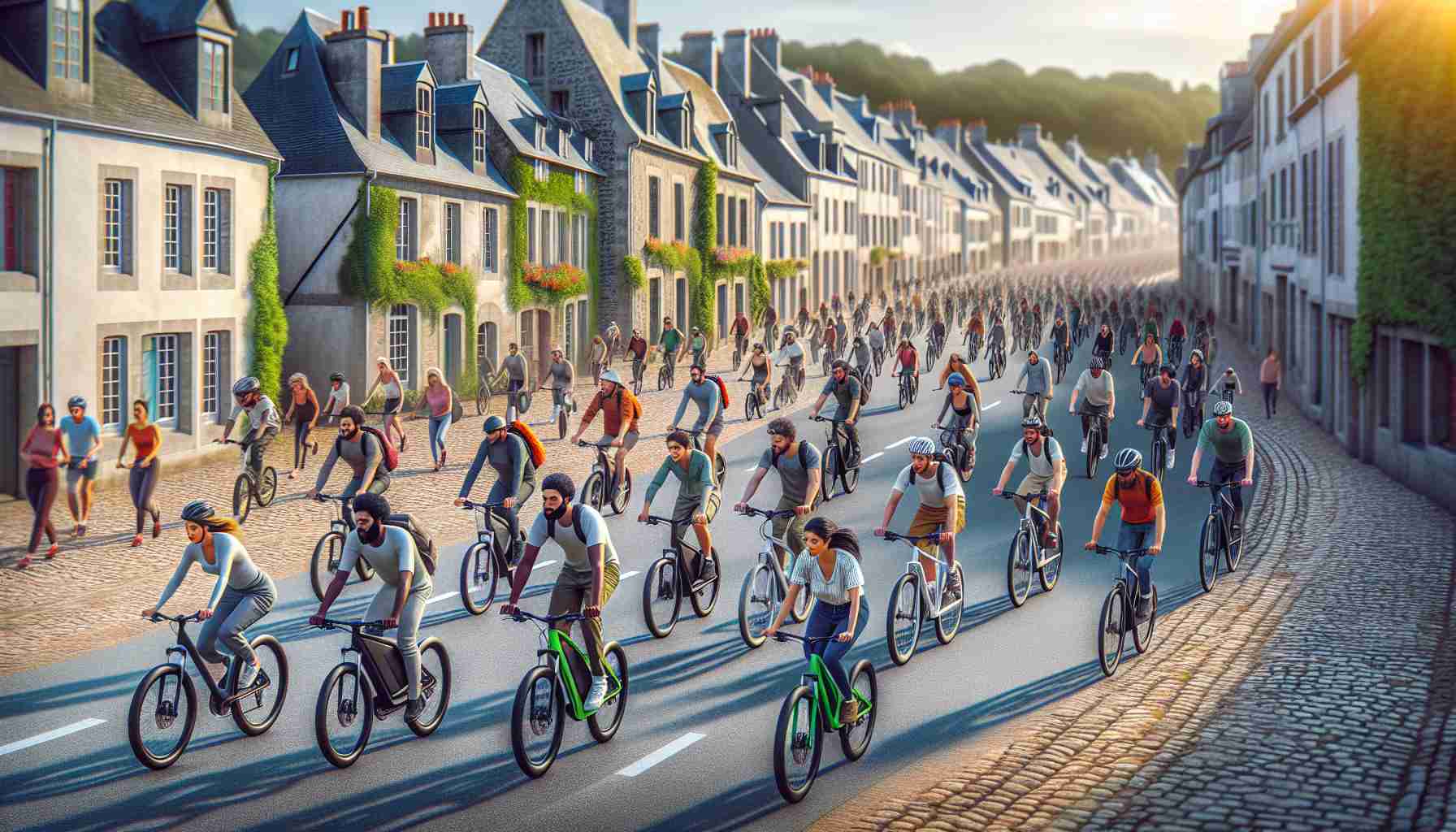- Electric bikes are revolutionizing transportation in Quimperlé, overcoming the town’s challenging terrain.
- Nicolas Cycles leads the change, with 70-80% of its sales from electric bikes, making cycling accessible to all.
- E-bikes account for 80% of sales at Sports et Nature in Riec-sur-Bélon and 20% at Ti Breizh Cycles Gouyec in Moëlan-sur-Mer.
- Post-COVID, demand stabilizes but remains strong, supported by local initiatives despite reduced government incentives.
- Modern e-bikes offer improved range, up to 180 kilometers per charge, enhancing their appeal as green transportation options.
- The shift to e-bikes in Quimperlé points to a sustainable future in mobility, driven by innovative technology and local enthusiasm.
The streets of Quimperlé, with their notorious hills and winding paths, have long challenged even the most seasoned cyclists. Yet, amid the quaint town’s scenic beauty, a quiet revolution powers forward, fueled by electric bikes, or vélos à assistance électrique (VAE). Once just a curiosity, these bikes now command the lion’s share of local commerce.
Enter Xavier Nicolas, a trailblazer in this electrifying transformation. At his shop, Nicolas Cycles, nestled amidst Quimperlé’s charming façades, electric bikes account for a stunning 70 to 80 percent of sales. With the gentle hum of an electric motor, cycling becomes accessible to everyone, not just the athletically inclined—a welcome relief given the town’s demanding terrain.
Similarly, in neighboring Riec-sur-Bélon, e-bikes comprise 80 percent of sales at Sports et Nature. Although Ti Breizh Cycles Gouyec in Moëlan-sur-Mer sees a modest 20 percent from VAEs, the ripple effect of this technological shift is undeniable.
Despite a post-COVID lull, demand persists, albeit at a more sustainable pace. Government incentives may be dwindling, but local support bolsters e-bike adoption, offering enticing, albeit marginal, financial nudges. The appetite for greener transportation solutions resonates with young couples eager to reduce their carbon footprint.
Today’s e-bikes have evolved, now offering up to 180 kilometers on a single charge, a far cry from their clunkier ancestors. With the lure of more pleasurable rides underscored by seamless, responsive technology, these two-wheelers promise a brighter, more sustainable future.
As the weather holds its breath and the town looks toward blue skies, the electric hum in Quimperlé may just herald a new era of mobility.
You Won’t Believe How E-Bikes Are Revolutionizing Mobility in Quimperlé!
The Electric Bike Boom: Real-World Use Cases and Industry Trends
The surge in electric bike, or vélos à assistance électrique (VAE), adoption in Quimperlé is not an isolated phenomenon but part of a broader trend sweeping through Europe and worldwide. E-bikes provide a unique solution to a variety of modern challenges, ranging from the desire for eco-friendly transportation options to overcoming challenging terrains such as those in Quimperlé.
How-To Steps & Life Hacks for E-Bike Buying
1. Assess Your Needs: Determine your primary use, be it commuting, leisure, or heavy-duty transportation.
2. Check Battery Life: For demanding routes like Quimperlé’s hills, consider bikes with a range of 100-180 kilometers per charge.
3. Try Before You Buy: Test different models to find one that suits your comfort and style.
4. Look for Incentives: While government incentives are dwindling, some local initiatives may still offer financial perks.
5. Maintenance: Regularly check the battery, tires, and brakes to extend your e-bike’s life.
Market Forecasts & Industry Trends
The global e-bike market is poised to grow significantly, with a forecasted CAGR of nearly 11% from 2022 to 2030 (Source: Grand View Research). This growth is driven by technological advancements and increasing urbanization, spurring demand for compact and efficient transport options.
Security & Sustainability
With environmental concerns escalating, e-bikes represent a key in sustainable urban commuting. Quimperlé’s emphasis on greener transportation underscores a global shift towards reducing carbon footprints. E-bikes emit virtually no pollution during operation and consume significantly less energy compared to traditional vehicles.
Insights & Predictions
The future of e-bikes looks promising as innovations continue to optimize performance and scope. Consumer preferences are steadily leaning toward more customized solutions, such as foldable models and enhanced battery capacities. The continuation of this trend suggests that e-bikes could become even more integral to urban mobility solutions, potentially overshadowing traditional cycling and short-trip car usage.
Tutorials & Compatibility
E-bikes are becoming increasingly user-friendly. Many modern models now feature intuitive interfaces and app integrations for enhanced user experience. Potential buyers should check compatibility with their preferred digital ecosystems for seamless rides.
Pros & Cons Overview
Pros:
– Eco-friendly alternative with low operational cost.
– Makes cycling accessible to a broader demographic.
– Effective for navigating hilly or long-distance routes.
Cons:
– Higher upfront cost compared to traditional bikes.
– Battery may require frequent charging depending on usage.
– Still a subject of regulatory scrutiny in some regions.
Actionable Recommendations
For those considering an e-bike, start by identifying your primary motivation—be it environmental concerns, health benefits, or convenience. Test various products from local shops like Nicolas Cycles and Sports et Nature. Stay informed about local support and potential incentives that could make your purchase more affordable. Finally, practice regular e-bike maintenance to ensure longevity and safety.
In conclusion, e-bikes are more than just a trend; they represent a transformative shift in how transport integrates with our daily lives, particularly in areas with challenging landscapes like Quimperlé. Their growing popularity is a testament to the demand for sustainable and accessible transportation solutions.
